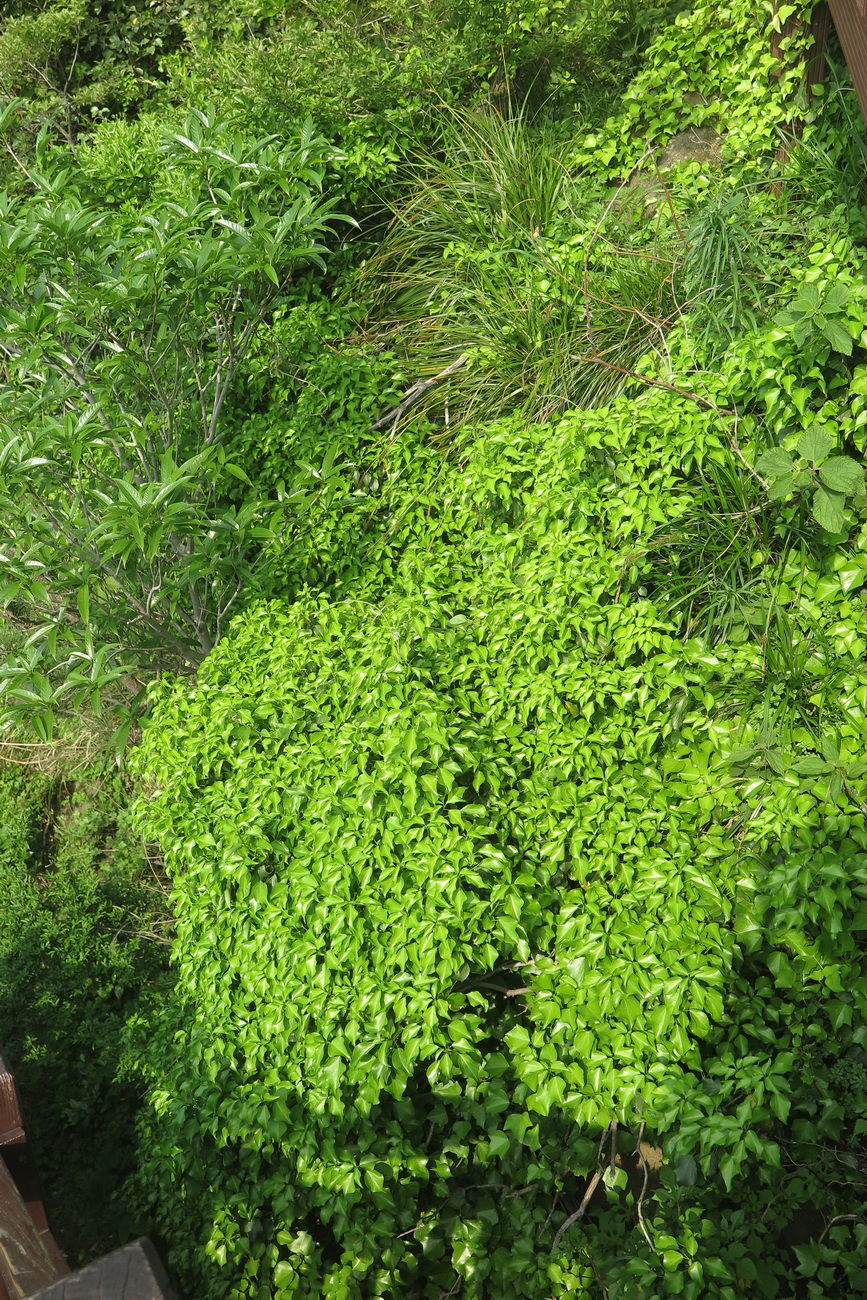Family: Araliaceae
Author: (Miq.) Paul
Bibliography: Gard. Chron. 1867: 926 (1867)
Year: 1867
Status: accepted
Rank: species
Genus: Hedera
Vegetable: False
Observations: Temp. E. Asia
Description
Japanese ivy, known scientifically as Hedera rhombea, is an evergreen climbing plant that belongs to the Araliaceae family. This vigorous species is native to temperate regions of East Asia, where it thrives in various habitats ranging from forests to urban areas.
Hedera rhombea is distinguished by its rhomboid (diamond-shaped) leaves, from which it derives its scientific name. The foliage is typically a vibrant green, although it can darken slightly in the shade or under certain environmental conditions. Mature leaves tend to be larger and more robust, providing excellent coverage for walls, fences, and other structures it climbs.
This plant’s climbing habit is facilitated by its aerial rootlets, which adhere strongly to various surfaces, including trees, rocks, and man-made structures. When cultivated, Japanese ivy can serve as a highly effective ground cover or a decorative climber, adding lush greenery to gardens and landscapes.
Japanese ivy’s adaptability to different light conditions, from full sun to deep shade, makes it a versatile choice for gardeners. However, it grows most vigorously in fertile, well-drained soil and benefits from regular watering, especially during dry spells. Despite its hardiness, it can suffer from common pests and diseases typical to ivy species, so routine monitoring and care are advisable.
As with many ivy species, it’s important to manage this plant carefully, as it can become invasive if left unchecked. Pruning and training are essential practices to keep its growth under control and ensure it enhances rather than overwhelms the intended area.
First described in detail in 1867 in the Gardener’s Chronicle, Hedera rhombea has since become appreciated for its ornamental value and efficiency as a ground cover. The plant was formally named and classified by (Miq.) Paul, recognizing its distinct morphological characteristics and its contribution to the botanical biodiversity of the Araliaceae family.
In sum, Japanese ivy offers a blend of aesthetic appeal and functional utility, making it a standout choice for enhancing green spaces in temperate regions. Its robust nature and striking foliage ensure that it remains a beloved choice among plant enthusiasts and landscapers alike.
Common Names
En: Japanese ivy
Zh: 菱叶常春藤
De: Japanischer Efeu
Ja: Fuyu-zuta, Ki-zuta
Ko: 송악
Synonyms
- Hedera helix var. rhombea (Miq.)
Distribution
- Japan (native)
- Korea (native)
- Nansei-shoto (native)
- Taiwan (native)
Additional Images

© copyright of the Board of Trustees of the Royal Botanic Gardens, Kew.

© copyright of the Board of Trustees of the Royal Botanic Gardens, Kew.
Leaf
Taken Oct 25, 2021 by Diego Alex (cc-by-sa)
Sources
- WFO (No URL)
- IPNI (No URL)
- GBIF (https://www.gbif.org/species/9511702)
- POWO (http://powo.science.kew.org/taxon/urn:lsid:ipni.org:names:60453330-2)
- PlantNet (https://identify.plantnet.org/species/the-plant-list/Hedera rhombea (Miq.) Siebold ex Bean)
- GBIF (https://www.gbif.org/species/3036022)

